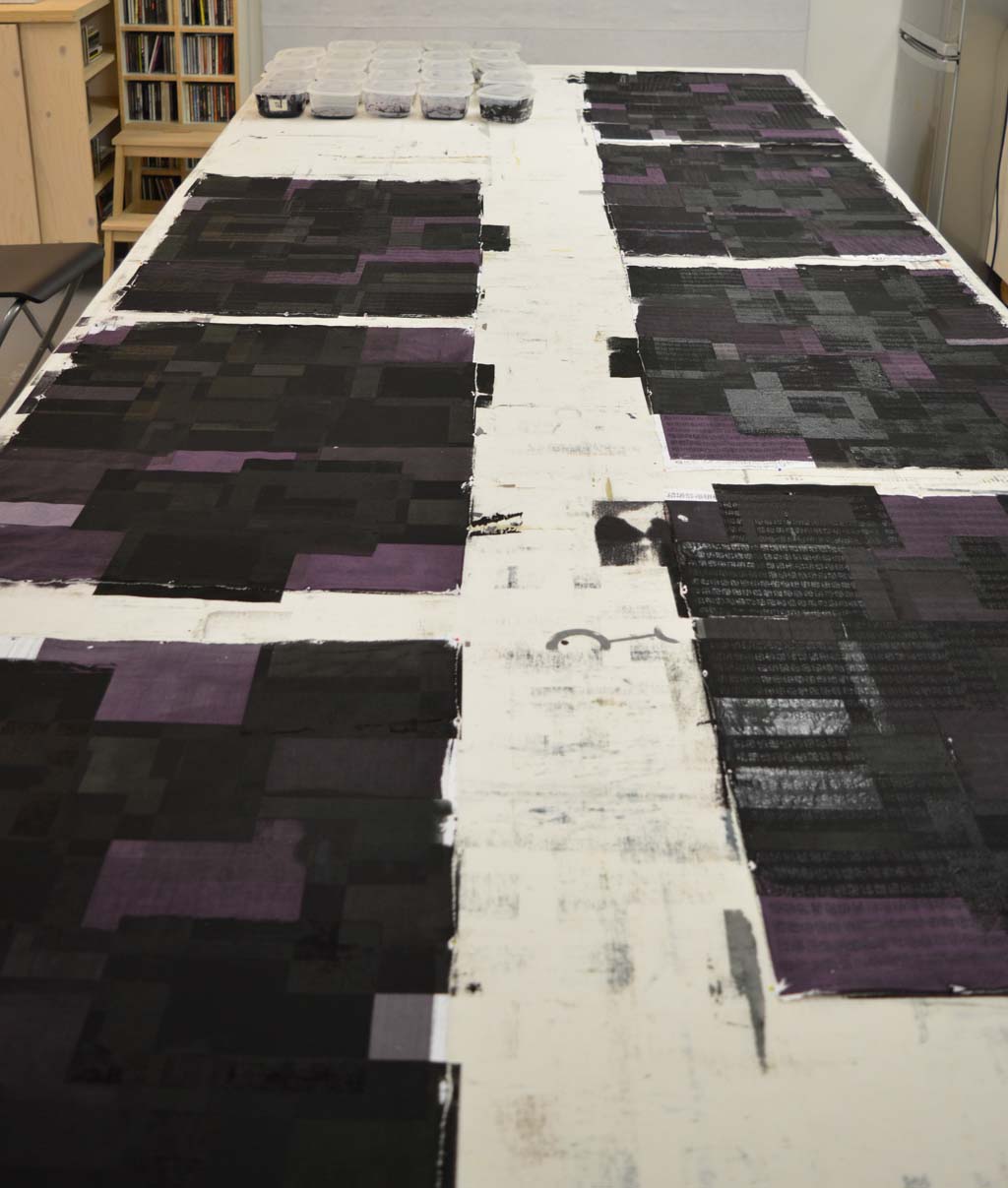 It will come as no surprise when I say that 95%+ of the textiles I use in my work are created using breakdown printing. Sometimes I include dyed pieces, sometimes I add a layer of print using thermofax but breakdown is my love.
It will come as no surprise when I say that 95%+ of the textiles I use in my work are created using breakdown printing. Sometimes I include dyed pieces, sometimes I add a layer of print using thermofax but breakdown is my love.
For the last few years I have printed knowing that the majority of cloth is going to be cut into rectangles and used to build backgrounds for series like Ruins. Which means that I don't think about composition when making the screens. I may choose square type shapes to embed or keep things aligned in one direction. When I print the screens I tend to place the prints side by side until I have filled the piece of fabric. Again I'm not thinking about composition. I occasionally cut out a particularly lovely section of cloth to use to cover book board but mostly the cloth gets cut down and pieced.

I love this process and expect to be using it for years but I'm also keen to find new ways to use breakdown - I love experimenting. I've played with printing with both thickened dye and discharge paste before batching my cloth. I've played with multiple layers of colour on a screen. Both gave interesting results but didn't fit with what I was trying to achieve at the time.
And then I saw some images on Instagram by the lovely Leslie Morgan of Committed to Cloth / the Creative Studio and had a lightbulb moment. Leslie and her students were painting thickened dye on screens to give very defined shapes (often buildings) then experimenting with colour exchange when they printed off the dried screen. Wonderful stuff that got me thinking about positive and negative space and how I could use breakdown screens to create series of monoprints.

So I have been playing. And having so much fun. Watch this space ..

 I have completed the first week of my 100 (week) day challenge. My goal is a steady 2 hours every weekday evening focussed on making small art with a commitment to finish at least one piece each week.
I have completed the first week of my 100 (week) day challenge. My goal is a steady 2 hours every weekday evening focussed on making small art with a commitment to finish at least one piece each week.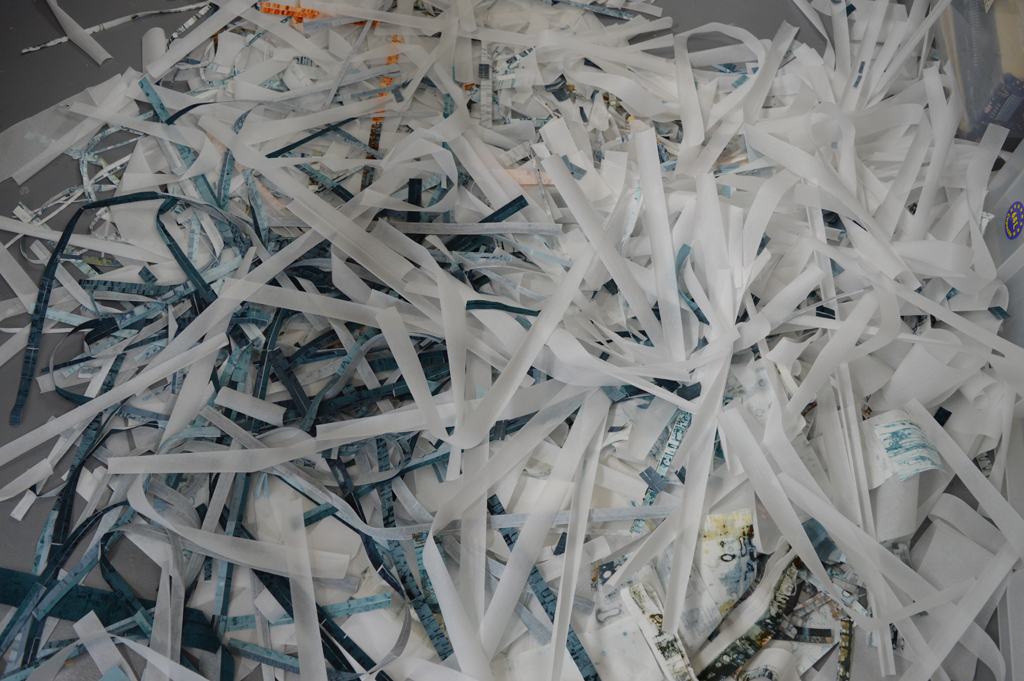 I recently
I recently 
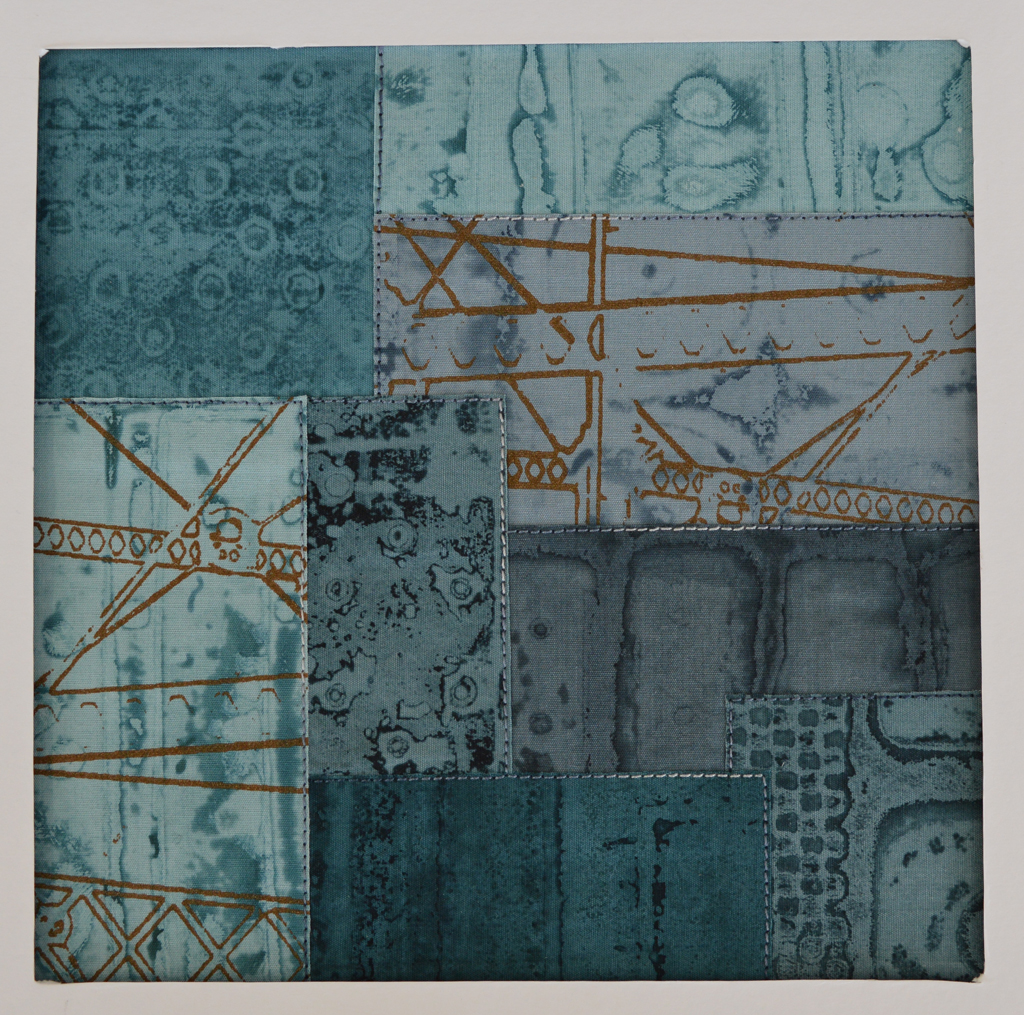 Knowing that I have two major exhibitions with
Knowing that I have two major exhibitions with 
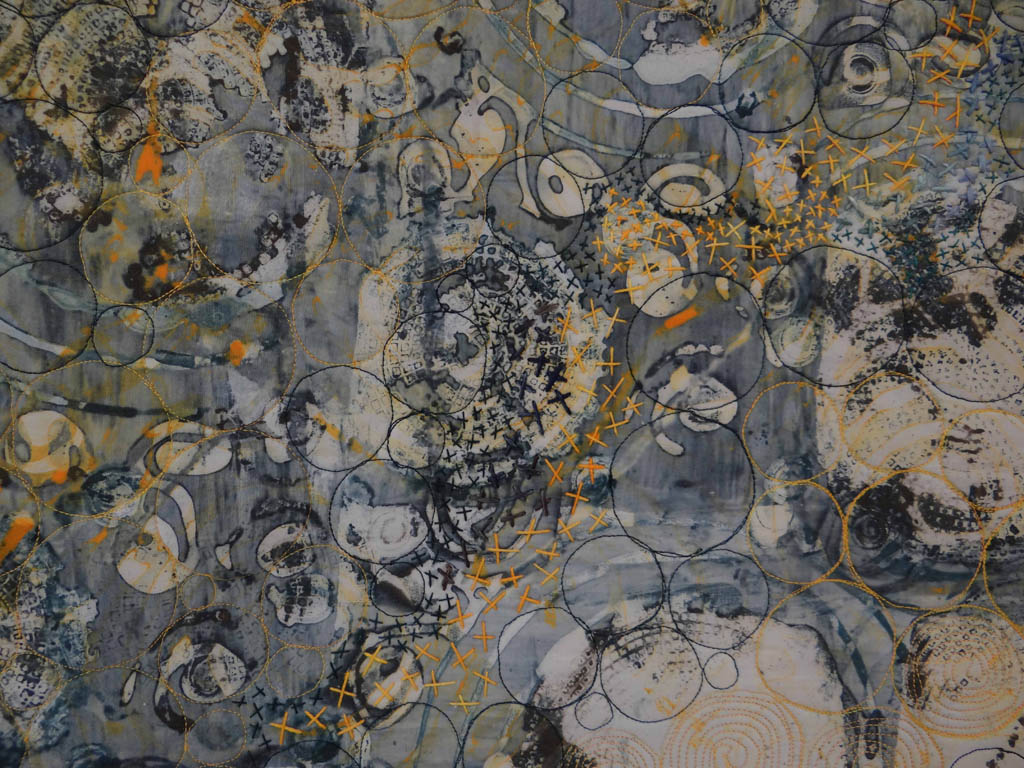
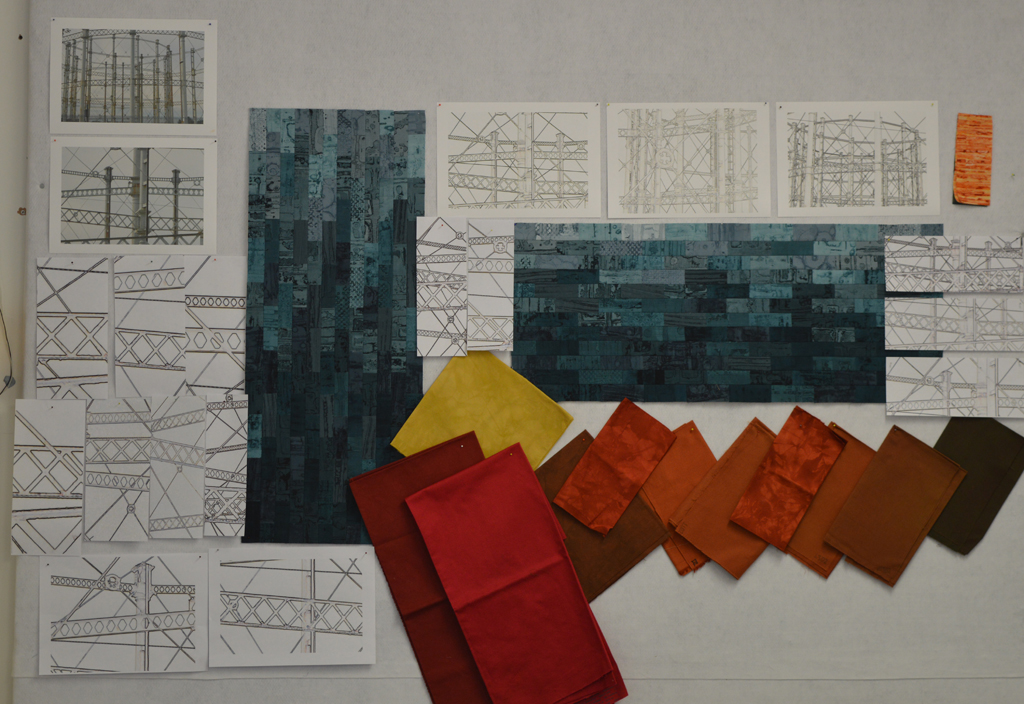
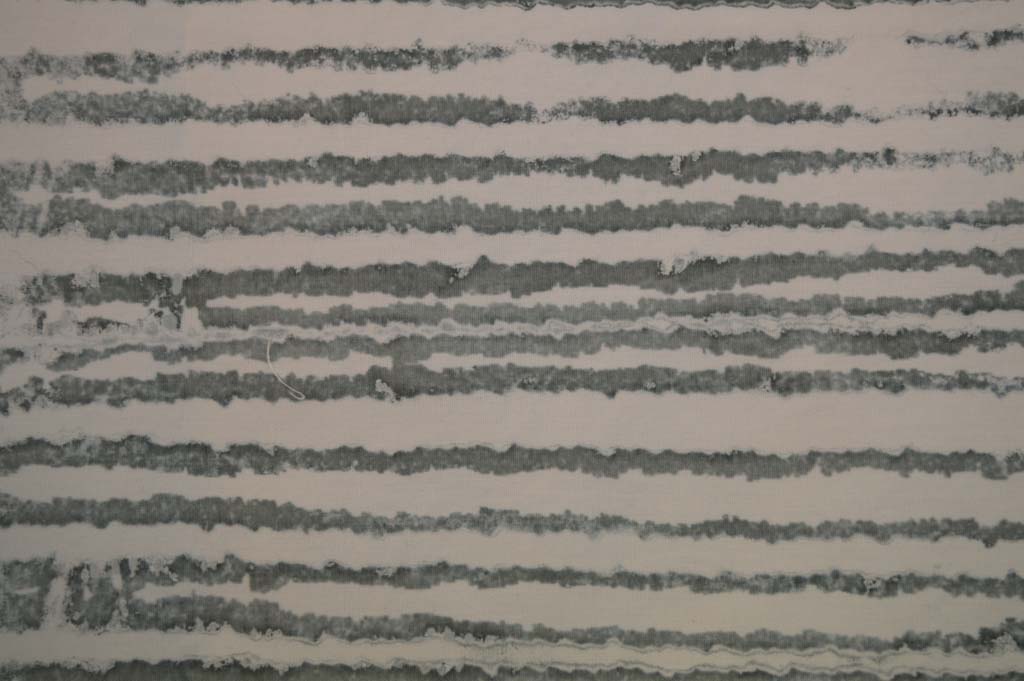 In between wrapping presents last week I did manage to prepare and pull some breakdown screens. I got some really promising marks by using a screen made with torn strips of freezer paper gently ironed onto the screen before rollering on a very thin layer of black thickened dye. I also made a screen using strips of torn masking tape. I wanted the marks to be delicate so pulled through with lots of print paste. And replaced the paste if it got tinted with colour.
In between wrapping presents last week I did manage to prepare and pull some breakdown screens. I got some really promising marks by using a screen made with torn strips of freezer paper gently ironed onto the screen before rollering on a very thin layer of black thickened dye. I also made a screen using strips of torn masking tape. I wanted the marks to be delicate so pulled through with lots of print paste. And replaced the paste if it got tinted with colour.

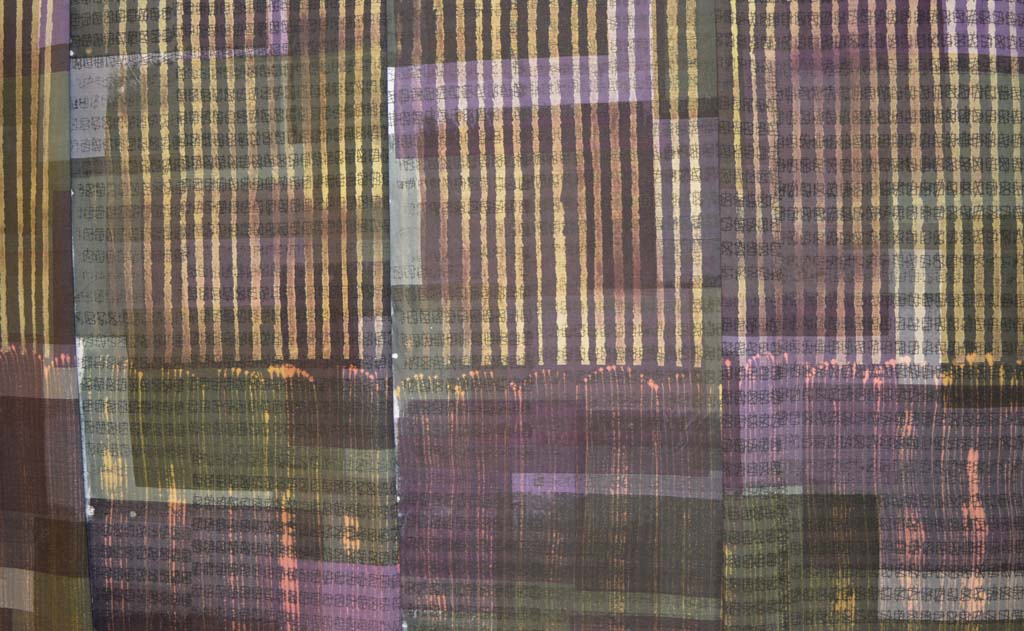 It is a good job that I have a Plan B as my experiments over the last week or so have failed to give me a 'WOW' moment. The results didn't even fall into the 'Ugly Duckling' category of pieces that might fit in with what I'm trying to achieve with some additional process. The experiment has been educational but not in any way that is connected with what I think I'm trying to achieve.
It is a good job that I have a Plan B as my experiments over the last week or so have failed to give me a 'WOW' moment. The results didn't even fall into the 'Ugly Duckling' category of pieces that might fit in with what I'm trying to achieve with some additional process. The experiment has been educational but not in any way that is connected with what I think I'm trying to achieve.